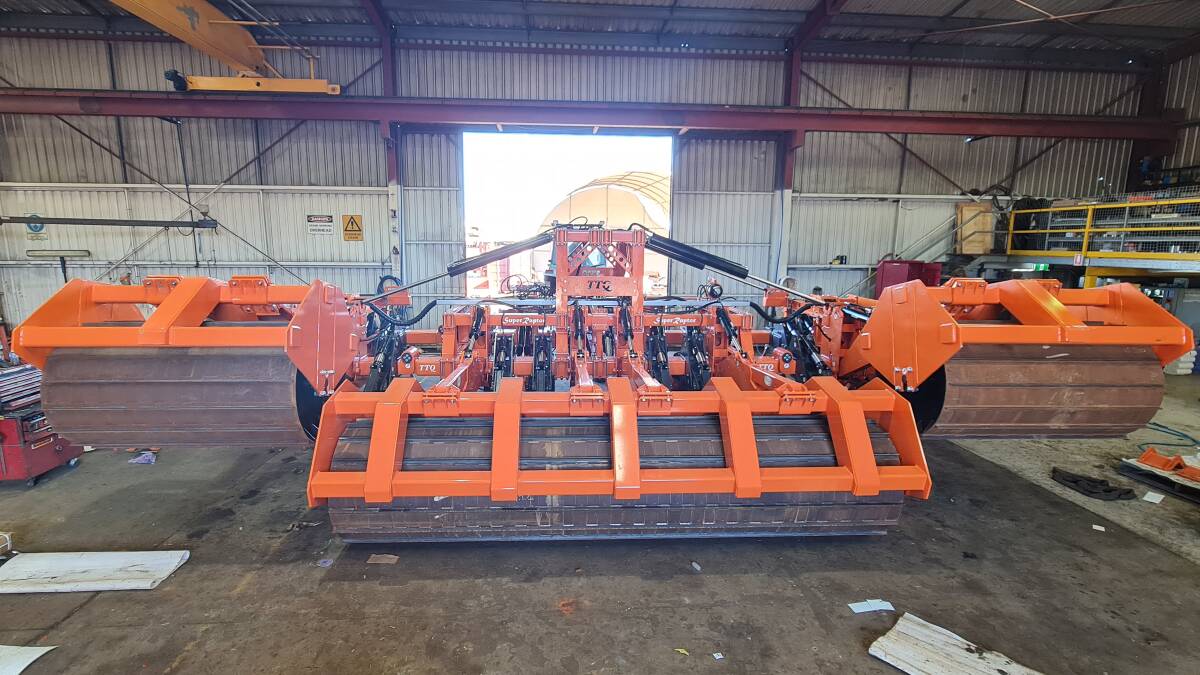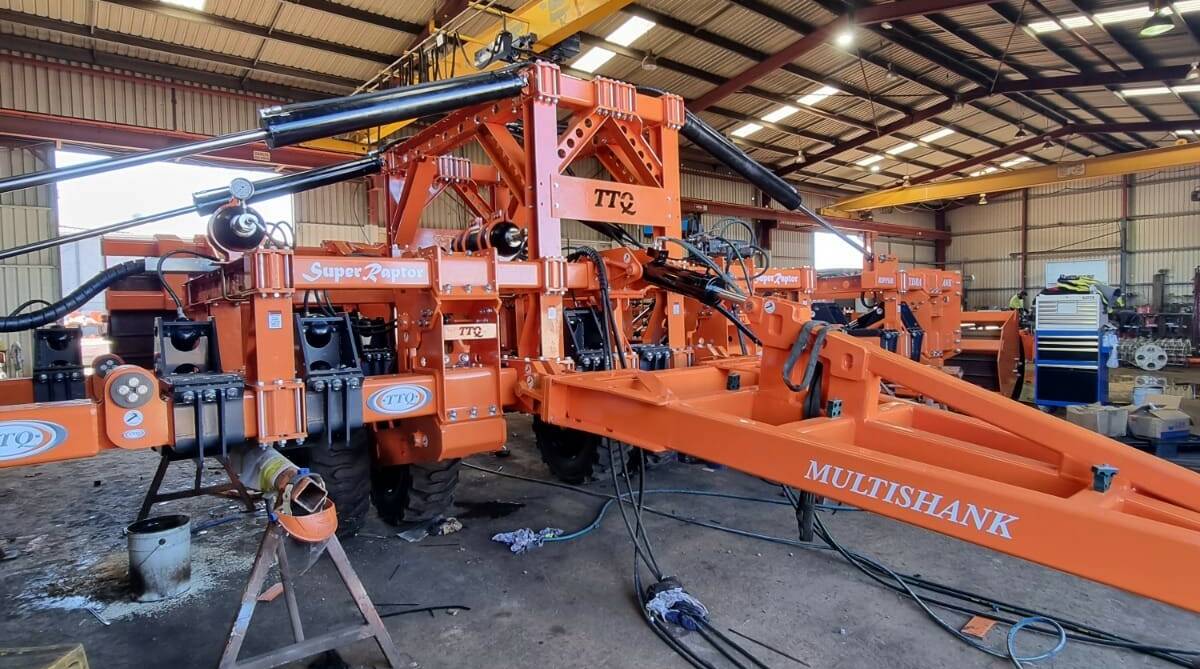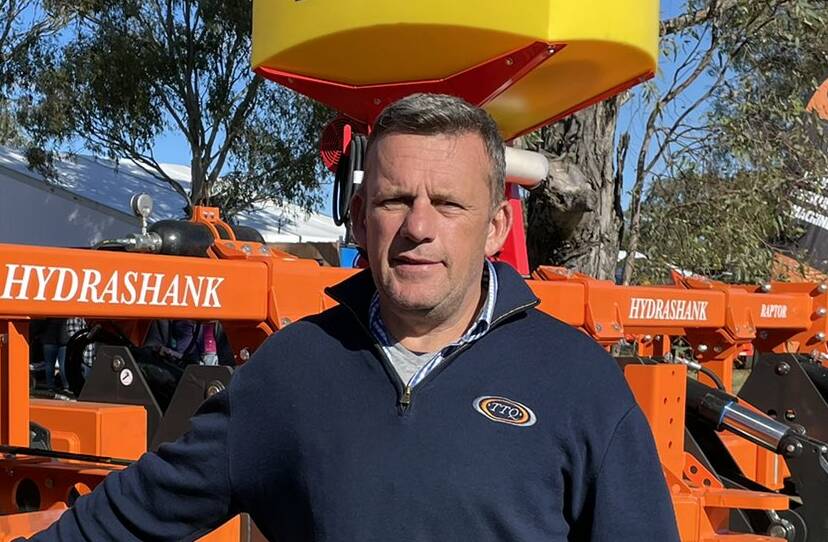
A machinery manufacturer on the Darling Downs has built a deep ripper which it's calling the world's heaviest.
Weighing 30 tonnes and measuring eight metres wide, the 18 tyne Super Raptor was custom built by Toowoomba company TTQ for a wheat and canola farmer near Dowerin, WA, to address soil constraints.
TTQ managing director Geraint Hudson said he believed it was the first ripper to crack the 30t mark.
"I'd be quite confident that's the heaviest deep ripper ever made," Mr Hudson said.
Their latest engineering feat beats their previous WA-bound efforts by five tonnes and beats their Queensland rippers by 12t.
"These are all machines that are off the chart in terms of size and scale. This one's really taken it to another level," Mr Hudson said.
Now, Mr Hudson and the team must work out how to pack it for its 4000km truck journey west.
"It's like trying to work out how to move a jigsaw puzzle. We've got to get it on two trailers and get it over the WA and then reassemble it, so you need to make sure you don't dismantle too much of it."
The machine's 18 tynes at the front can rip to a depth of 850mm and the rear packers or drums are able to smooth the soil back over.
About 30pc of the machine is made of 700MPa (minimum yield strength in megapascals) grade structural steel from a Swedish mill, which allows for more flex.
The project took hundreds of hours of labour over three weeks to complete.
"It took 300 hours to assemble, which is an insane amount of time. It will take another 30 hours to disassemble [for transport]," Mr Hudson said.
"That was a fair chunk of our available assembly time over the last three weeks. It kept people busy."
The business has built wider machines before, maxing out at 15m, but making it fold added more complexity.
The wings weigh six tonnes each and have to fold perfectly because the customer has to travel more than 100km between farms.

Showing off the new design on social media a few days ago, Mr Hudson has received plenty of reactions.
"When I posted it on Twitter, there were people on the east coast saying it was a stupid machine to build because it was too big to pull, but they just don't understand sand," he said.
Mr Hudson said rather than upgrade to a tractor with more horsepower, customers were changing to triple wheels to get their traction - though he did say the 30t ripper will require at least 450hp.
In WA, a range of GRDC projects have conclusively demonstrated the benefits of ameliorating sandy duplex soils using a range of soil inversion, mixing or loosening techniques such as ploughing, spading and deep ripping.
In April, Department of Primary Industries and Regional Development WA research scientist Bindi Isbister said despite the high cost of fuel, deep ripping a soil type that typically had a good yield response still made it economically worthwhile.
"For example, for good sandplain that has a 600 kilogram per hectare wheat yield response, deep ripping is worthwhile. Even at a fuel cost of $3 per litre, with a wheat price of $330 per tonne, the additional return from deep ripping is $28 per hectare in the first year."
Mr Hudson agrees, saying no-till farming "can't be no till ever".
"Farmers who have not touched their soil in 20 years are now experiencing huge difficulties and this latest generation of farmers broadly recognise that," he said.
"There's been a huge uptick in the last two years in deep ripping. We've probably made more than anyone else in Australia of these big machines, and Australia probably leads the world as it does in many agricultural areas."

Read more:


